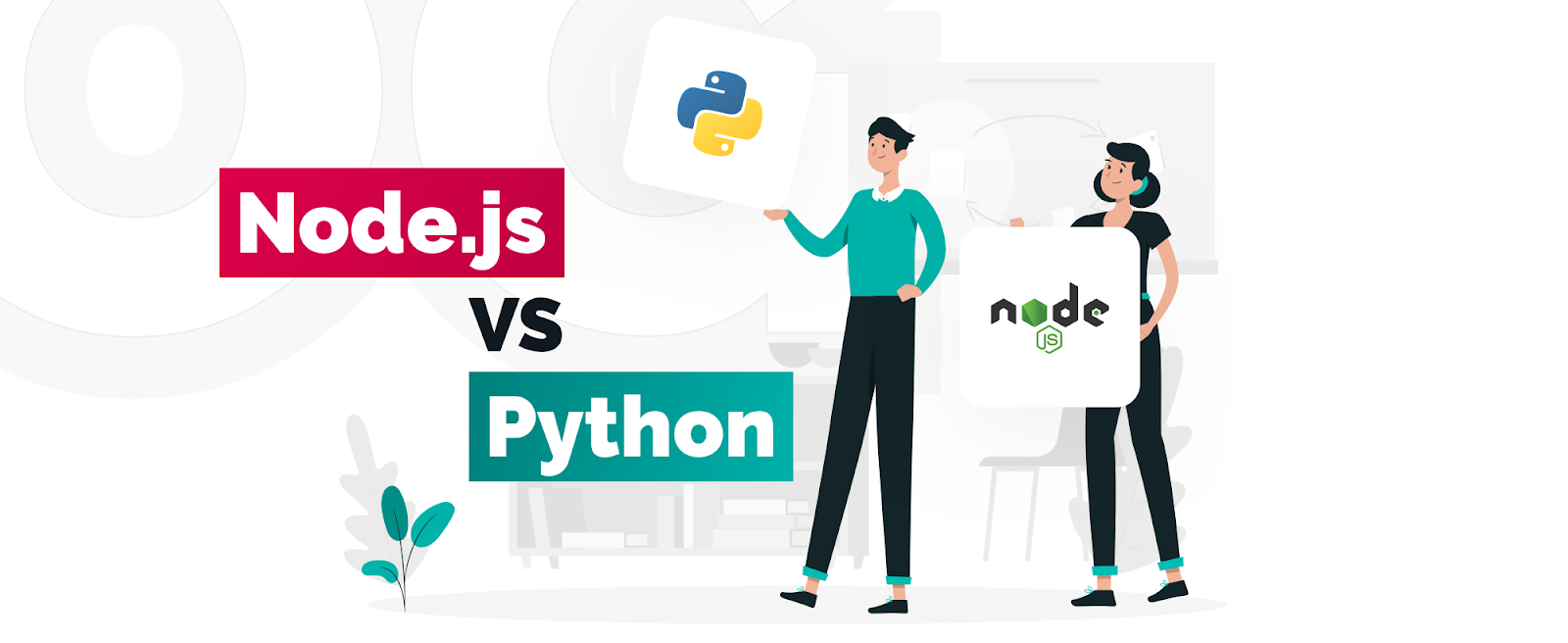With a plethora of programming languages in the tech world today, picking the right one for back-end development can be a tough decision. Python and Node.js are two dominant forces that garner significant attention due to their unique attributes and extensive applications. This comprehensive guide illuminates the distinct features, advantages, and drawbacks of both Python and Node.js, with a keen eye on helping both novice and experienced programmers make informed decisions.
Python’s Commanding Grip
Python, a high-level, interpreted programming language, holds a wide appeal due to its simplicity and dynamic typing. Its popularity stems from its ability to rapidly develop applications and automate tasks spanning diverse applications such as web development, data analysis, AI, game development, and ML, to name a few.
Key Features of Python
- Python’s code blocks are defined by indentation, enhancing the code’s readability;
- It facilitates the definition of functions and their organization into modules, promoting reusability;
- The dynamic typing in Python eliminates the need for prior declaration of variable types;
- Python’s object-oriented programming capability allows developers to define classes and create objects with attributes and methods;
- An extensive standard library and a multitude of pre-built modules make Python a go-to choice for developers;
- It is simple and easy to learn, making it an ideal language for developers of all experience levels.
Node.js: The JavaScript Champion
Node.js is an open-source, cross-platform JavaScript runtime that focuses on creating server-side applications. It has gained popularity in developing real-time applications like chatbots, games, and IoT solutions. Offering an asynchronous and event-driven coding approach, Node.js is capable of handling multiple concurrent connections with less system resources, making it a preferred choice for high-performance, scalable web application development.
Key Features of Node.js
- Event-driven architecture, making it possible to build responsive and scalable applications;
- A single-threaded nature that uses an event loop to manage asynchronous operations and distribute work across multiple cores;
- It is cross-platform, supporting multiple operating systems;
- It is equipped with a default package manager, Node Package Manager (NPM), that enables access to a vast collection of third-party libraries and modules;
- It is often utilized for server-side scripting and building web applications;
- With a lightweight nature, Node.js can manage a large number of requests without performance degradation.
Python and Node.js: The Comparison Table
| Feature | Python | Node.js |
|---|---|---|
| Type | General-purpose | Server-side runtime environment |
| Syntax | Simple and straightforward | JavaScript-based; can be complex |
| Performance | Tends to be slower | Faster due to non-blocking I/O operations |
| Libraries | Extensive standard and third-party libraries | Limited standard library; extensive third-party libraries through NPM |
| Community | Robust and active | Growing and vibrant |
| Applications | Versatile – web development, AI, ML, etc | Predominantly used for real-time web applications and network applications |
| Scalability | Limited by Global Interpreter Lock (GIL) | Designed for high scalability |
| Learning Curve | Beginner-friendly | Requires familiarity with JavaScript and asynchronous programming |
| Use cases | Diverse use across various industries | Best-suited for real-time and scalable applications |
Which to Learn – Python or Node.js?
Choosing between Python and Node.js depends largely on individual ambitions and project requirements. Those leaning towards data analysis, machine learning, or simplified web development might favor Python, while those building scalable, high-performance network applications might gravitate towards Node.js.
Python or Node.js: The Backend Choice
Back-end developers often find themselves at the crossroads of choosing between Python and Node.js. Python’s simplified syntax and extensive library modules make for faster development, while Node.js, being highly scalable and impressive with real-time applications, also presents a compelling case. The ultimate choice boils down to the specific needs of the given project.
The Speed Factor: Is Node.js Faster than Python?
Node.js generally outperforms Python in handling large volumes of data and processing I/O operations, thanks to its non-blocking, event-driven nature. However, the speed of either language can be influenced by specific use cases and the application of libraries and tools.
The Future of Back-end Development: Python and Node.js
The future of back-end development looks promising with languages like Python and Node.js. Python’s trajectory of success is largely attributed to its easy syntax, making coding accessible to everyone, while Node.js has decisively been supporting future technologies, like IoT. Choosing between the two will be a balance of project requirements and developer skills.
Video Guide
To answer all your questions, we have prepared a video for you. Enjoy watching it!
Conclusion
Both Python and Node.js serve as powerful tools for modern back-end development. Each shines in its domain and caters to a different set of requirements and preferences. Python’s simplicity and versatility make it a favored choice for beginners and for tasks requiring quick prototyping, whereas Node.js’s high-performance nature and scalability make it ideal for building real-time applications and services. Choosing the right tool entirely depends on the nature of the project, individual proficiency, and long-term goals.
